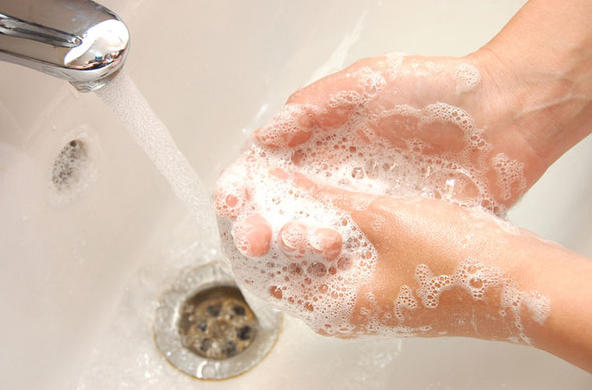Antibiotics are flowing into freshwaters; drug-resistant ‘superbugs’ are emerging as a result.
Antibiotic use is on the rise globally. These biologically active compounds end up in freshwaters, where they affect aquatic life and alter the species composition of resident microbes and bacteria.
While Cary research has shown that microbial communities can adapt and persist in the presence of persistent pharmaceutical pollution, not all microbes are equal in terms of their impact on water quality and human health. For example, urbanized streams have been found to harbor bacterial species associated with human disease and gastrointestinal illness.
The problem
- Drugs are not fully broken down in our bodies; we excrete active pharmaceutical compounds.
- Globally, 80% of the world’s wastewater is discharged directly into waterways.
- Even when sewage arrives at wastewater treatment facilities, most are not designed to filter out pharmaceutical compounds.
- Pharmaceutical exposure alters microbial communities, favoring resistant ‘superbugs’.
We are exploring...
- How urbanization affects the type and abundance of pharmaceutical pollution in waterways
- How stream microorganisms change with increasing pharmaceutical inputs
- What these changes mean for human health and water quality
“Pharmaceuticals and personal care products have been detected in 80% of streams sampled across the US. Similar patterns are being observed globally. Most of these compounds are understudied and unregulated. Yet there is growing evidence that synthetic compounds disrupt aquatic ecosystems, even at low concentrations.” –Emma Rosi
Our discoveries
Cary-led research on suburban and urban streams in Baltimore, Maryland found that urban streams had both a greater number of drugs present, and higher drug concentrations. In the most impacted streams, pharmaceutical pollution shifted the composition of stream microorganisms, creating pockets of ‘resistant’ microbes that can withstand high concentrations of pharmaceuticals and antibiotics.
“When we expose streams to pharmaceutical pollution, we are unwittingly altering their microbial communities. Yet little is known about what this means for ecological function and water quality." – Emma Rosi
Cary research on the effects of triclosan on freshwater microbes was part of the body of science that led the FDA to ban the chemical from hand soaps in 2017.
Invented for surgeons in the 1960s, triclosan slows or stops the growth of bacteria, fungi, and mildew. Triclosan enters streams and rivers through wastewater, leaky sewer infrastructure, and sewer overflows.
Cary research in Chicago streams and at our Artificial Stream Facility found that triclosan pollution leads to the growth of triclosan-resistant bacteria, with urban streams harboring the highest concentrations. Triclosan was also found to cause a dramatic die-off of algae – the foundation of the stream food web – and a six-fold increase in harmful cyanobacteria.
This work bore important implications for human health. If triclosan was giving rise to antibiotic-resistant bacteria in streams, it could also spur antibiotic resistance in bacteria harmful to people. Aquatic ecologist Emma Rosi, with colleagues, successfully advocated for the removal of triclosan from hand soaps.

